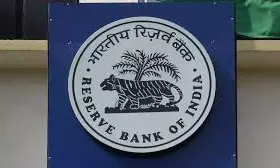Panel reveals ‘pathetic’ state of water bodies
The parliamentary standing committee on water resources has expressed deep concerns on the “pathetic” state of water bodies in the national capital where “as many as 2,015 have been fully encroached u;
The parliamentary standing committee on water resources has expressed deep concerns on the “pathetic” state of water bodies in the national capital where “as many as 2,015 have been fully encroached upon, while 89 have been converted into parks”. Even worse, out of the 971 existing ones, 349 have dried up, the committee observed. The report, which was tabled in Parliament on August 2, also noted illegal occupation of nearly 100 “urban” water bodies for commercial and other activities in Uttar Pradesh, 44 in Tamil Nadu and 26 in Haryana, 12 in Assam and 7 in Uttarakhand. It blamed the Centre for “making no efforts to keep itself abreast of the ground situation”. A water body is a structure where water from streams, springs, rain or drainage of water from residential areas is accumulated.
“We are of the view that lack of enforcement of existing laws and poor maintenance of land records in both the rural and urban areas have resulted in rampant encroachment and thereby violating the sanctity of the land records, a fact admitted by the special secretary of the ministry (water).” “Despite the ministry of urban development issuing an advisory for including water bodies as ‘municipal assets’ in land records, no state has maintained such a reco-rd,” the committee said, while urging the states to do so immediately so that action can be taken against the encroachers.
Reprimanding the water ministry for making “no efforts to keep itself abr-east of the ground situation” with regard to situation of water bodies in the country, the committee ex-horted the Centre to man-datory build a central da-tabase incorporating info-rmation from all states and Union territories.
“The water ministry should devise its own classification system, uniformly applicable to all water bodies in the country, thereby ensuring better administration and monitoring of the upkeep of water bodies in all states. A preparation of a comprehensive database is, therefore, recommended.”
The committee also pointed out unyielding multiplicity of schemes to check encroachment and suggested a feasibility study of merging such schemes and evolve a comprehensive one with inter-ministerial and inter-departmental coordination.
BOX Total number of water bodies in India, as per water resources information system (WRIS) are 7,98,908, including temporary ones like abandoned quarries, industrial ponds, bays etc. Maximum water bodies are in Chhattisgarh – 1,04,716. Delhi is amongst the worst off as far as encroachment is concerned. The water bodies have declined from 5,56,601 (in 3rd census in 2001) to 5,23,816 (in 4th census in 2007, which is the latest). Out of these 5,23,816, 80,128 water bodies were not in use while 18,485 were never used resulting in loss of almost 2 million hectare of irrigation potential.





